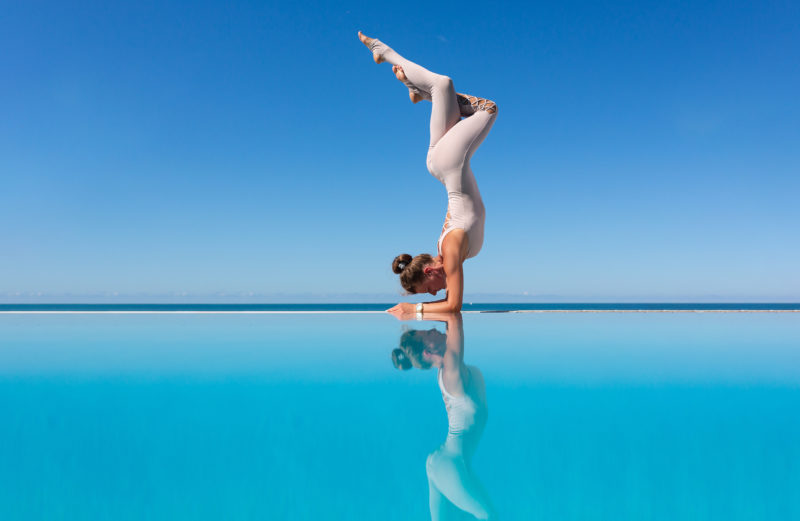Have you ever given much thought to your circulation? Chances are you only think of it when you can’t warm your hands or feet. Good blood circulation means the body’s organs are being supplied with the necessary oxygen and nutrients they need to efficiently operate.
Sometimes our circulatory system is temporarily affected by temperature, but there are other causes for poor circulation. Let’s take a look.
What Causes Poor Circulation?
Poor circulation could be caused by a few different factors but, essentially, it comes down to a blockage somewhere in the line. Narrowed arteries, blocked valves, or blood clots can hinder the flow of blood to and from the heart and our other organs.
Some of our lifestyle choices may lead to poor circulation, while others may simply be hereditary.
- Atherosclerosis – Plaque buildup in main arteries
- Diabetes – Excessive glucose in the blood
- Deep Vein Thrombosis – Blood clots in the legs
- High Blood Pressure – Weakened blood vessel walls due to high pressure
- Peripheral Artery Disease – Plaque buildup in peripheral arteries
- Pulmonary Embolism – Blood clot in the lungs
- Raynaud’s Disease – Narrowed blood vessels
- Smoking – Damages blood vessels and affects their performance
- Varicose Veins – Reversed blood flow in damaged vein walls and valves
Symptoms of Poor Circulation
Besides freezing cold fingers and toes, you might experience the following as a result of poor circulation:
- Achey, weak, or cramping muscles
- Blue skin
- Bulging veins
- Chest pain
- Numbness, or pins and needles feeling on the skin
- Swelling
How to Improve Blood Flow
Sometimes you will need medical intervention to address poor circulation issues. Be sure to consult with your medical provider regarding what treatment might be best for you. If you’re interested in improving your circulation, here are some holistic approaches for doing so. These may complement other methods recommended by your doctor.
Drink More Water
Dehydration can greatly reduce circulation. Our bodies are at least half water, so increasing our intake can benefit us in myriad ways. Consuming the right amount of H2O for our activity levels can normalize blood pressure, stabilize the heartbeat, and help regulate the body’s temperature.
If drinking plain water is difficult, remember that you can also get adequate hydration by drinking tea or flavored water as well.
Dry Brush Your Skin
Using a brush with stiff, flat bristles to dry brush your skin can help improve circulation. Move the dry brush in long, sweeping motions from your feet up your legs. Do the same starting at your hands and up your arms. For the belly and low back, move the brush in circles.
Elevate Your Legs
Putting your legs up a wall can help get your blood pumping and reduce swelling in your lower extremities.
Exercise
Aerobic exercise forces your body to take in more oxygen, which is another way to get your blood pumping. Aerobic exercise can also lower blood pressure when done consistently. Try adding walks, bike rides, swimming, or jogging to your daily routine to improve your blood circulation. Start with just 30 minutes per day, and aim for at least five days each week. Be sure to incorporate stretching into your exercise routine as well, as it supports circulation.
Get a Massage
For a relaxing way to improve blood flow, get a massage to promote the circulation of blood and lymphatic fluids.
Increase Omega-3 Fatty Acid Intake
Fish, kale, and many seeds contain omega-3 fatty acids, which help improve circulation and cardiovascular health. Omega-3s can reduce inflammation and plaque buildup (atherosclerosis) in the body’s main arteries.
Migun Bed Treatment
Migun beds combine gentle acupressure, acupuncture, heat therapy, massage, and spinal adjustments in one treatment. Migun beds can improve lymphatic circulation and reduce blood pressure, which can support proper blood circulation. It’s important to note, however, that people with blood clots should not seek Migun bed treatments.
Wear Compression Garments
Compression socks and sleeves help by applying pressure to areas of the body that might have varicose veins. The tightness of the garments can help regulate blood flow and reduce swelling in the extremities. You can wear compression gear while exercising, working at a desk, or when traveling by plane. Always talk with your doctor about the best type of compression garments for you, and the length of time you should wear them.
CONTACT ALPINE CLINIC TODAY
801-407-3000
If you have questions about the best ways to improve your circulation with healthy living, Alpine Clinic can help. We believe in getting to the root of the problem, and want to provide you with the knowledge and tools you need to support your overall health.

